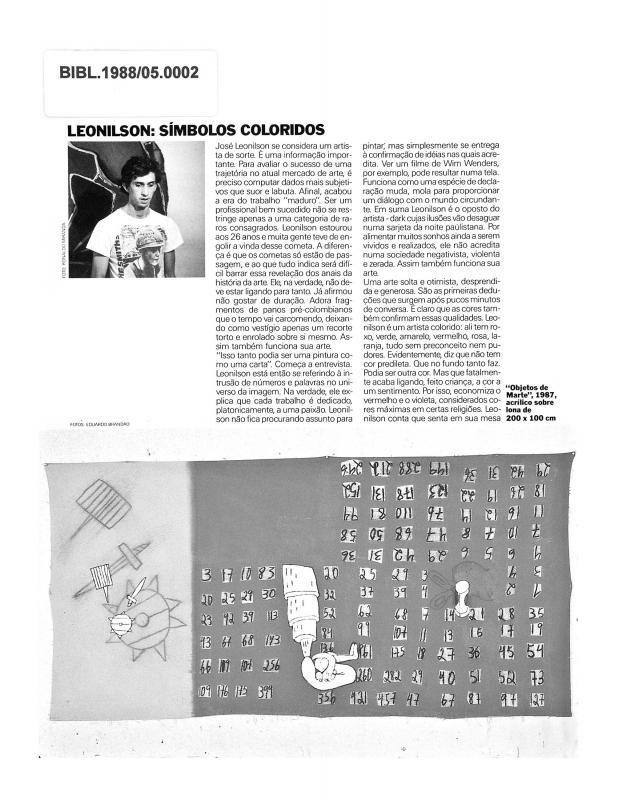The art critic and curator Lisette Lagnado (b. 1961) was one of the first to write about José Leonilson’s work. She interviewed the Brazilian artist in 1992, when he was already in failing health due to AIDS. This is an important document that contributes to a broader understanding of his work. The interview shows something of the artist’s lightness in his irreverent attitudes, and in the simplistic yet focused reasoning he reveals in his answers and digressions that help to shed light on what he thought about his technique, his art, and himself. The interview was included in Leonilson. São tantas as verdades (São Paulo: DBA/Melhoramentos, 1996)—the book that was presented at the opening of his first retrospective exhibition that bore the same title and was curated by Lagnado at the SESI Gallery—which also includes critical essays by Ivo Mesquita and Adriano Pedrosa.
José Leonilson [Bezerra Dias] (1957–93) was an artist from Ceará (a state in the “northeast” of Brazil) who moved to São Paulo where he trained and developed as an artist. He became one of the most famous artists of the “Geração 80” that embraced the “volta à pintura,” a term that had, since the early years of the century, been translated as “retour à l’ordre” or “return to painting”—that is, a hedonistic approach that rejected the rationalism of the conceptual art that had played such a dominant role prior to the 1970s. However, this type of art morphed into an intimist style as the issue of identity confronted his imminent death, a crisis situation that arose when he tested positive for HIV.
Lisette Lagnado, the researcher, art critic, and writer played an important role in the Projeto Leonilson that was undertaken shortly after the artist’s death (1994), initially intended as way to organize a Catalogue raisonné of his work in order to give it greater exposure. In fact, the book and the above-mentioned exhibition that Lagnado curated in association with the Serviço Social da Indústria are the project’s major accomplishments to date.
In regard to this interview, see by Lisette Lagnado, “Leonilson: símbolos coloridos” [doc. no. 1110768].

